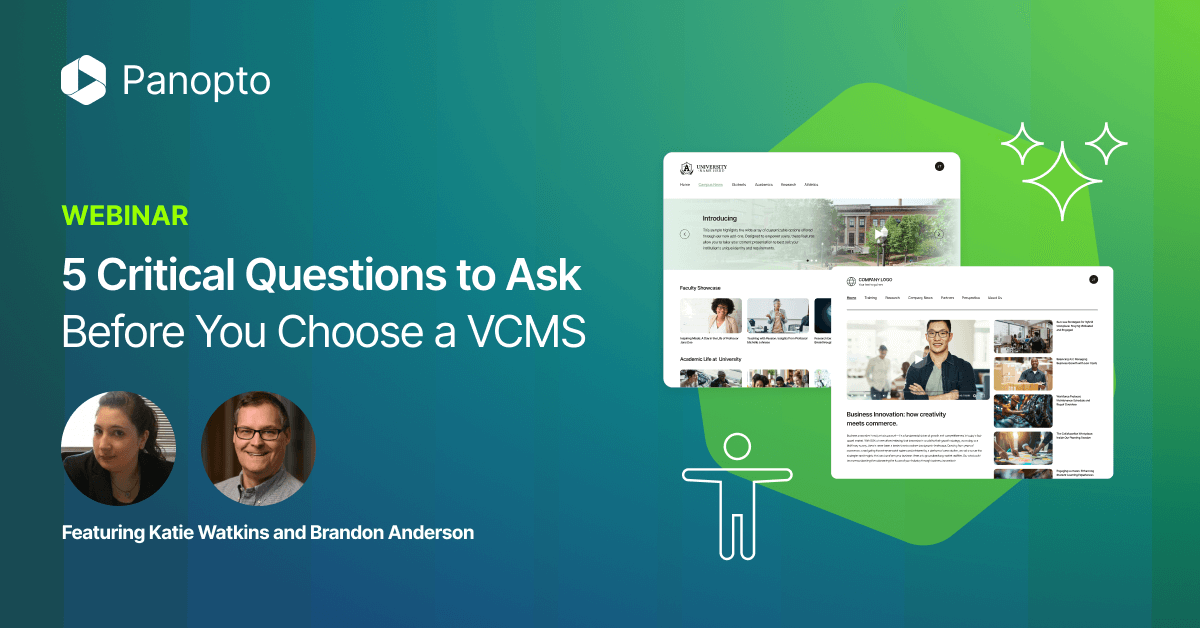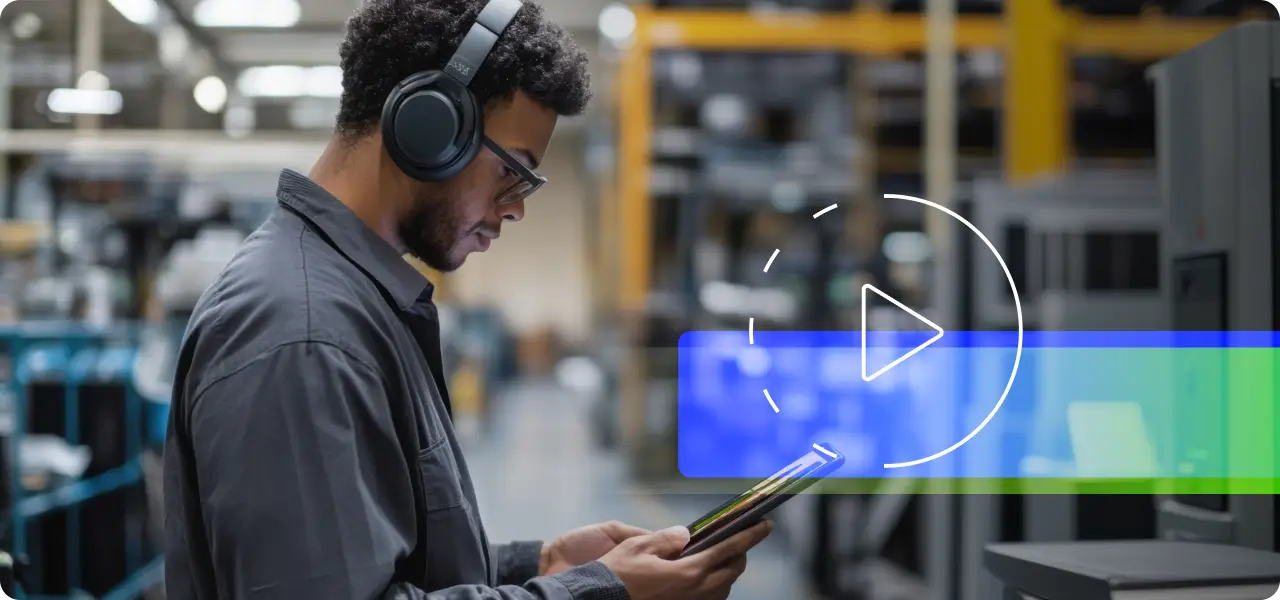Featured Article
Content Retention Demystified: Strategies for Smarter Video Storage with Panopto
Outdated content burdens the teaching and learning experience. Discover how content hygiene can improve your university’s learning ecosystem.

-

- Webinar
How Higher Ed is Using AI to Strengthen Teaching, Not Replace It
“AI needs us. It’s not the other way around. We as humans impact how AI is going to work for…
-

- Product Spotlight
Panopto vs. Kaltura: Feature and Specification Comparison
Compare Panopto and Kaltura features, pricing, and customer ratings. See why 22 of the world’s 25 leading universities choose Panopto…
-

- Webinar
Just-in-Time Learning Strategy: Key Insights from Panopto’s Webinar Panel
The modern workplace faces a paradox: organizations invest heavily in training, yet employees consistently report they can’t find the information…
-

- Webinar
Transforming L&D with AI: Accessible Knowledge Insights for LIFOW
“Employees aren’t asking for more courses; they’re asking for answers the moment they need them.” This revelation, posed during Panopto’s…
-

- Press
Panopto Named to 2026 GSV 150: Recognized Among the World’s Most Transformational Growth Companies in Digital Learning & Workforce Skills
Panopto, the leader in visual and auditory learning for higher education and enterprise, has been named to the 2026 GSV…
-

- Training
Train with Video. Scale with AI.
It starts with something simple. Someone records a quick walkthrough for a colleague. Someone else shares a screen-recorded explainer. A…
-

- Press
Panopto Recognized as 2025 Training Magazine Network Choice Awards Winner in Authoring Tools Category
Panopto is proud to announce that the company has been recognized by Training magazine as a 2025 Network Choice Awards…
-

- Webinar
Essential Takeaways from “5 Critical Questions to Ask Before You Choose a VCMS”
What if the video platform you choose today easily scales to meet future needs, maximizes your budget, preserves critical knowledge,…
-

- Webinar
Key Insights From the “Campus Capture vs. Cloud Classrooms” Webinar
When was the last time you rewatched a lecture recording? Was it for a quick refresher before an exam, or…
-

- Training
How to Create Training Videos with Elai, Panopto’s AI Video Creation Studio
The way we learn and train is changing. Traditional classrooms and instructor-led sessions are limited by time, space, and cost,…
-

- Academic Technology
Smarter Video Storage: A Leadership Guide to Content Retention with Panopto
As virtual, hybrid, and asynchronous learning continues to expand, universities and other higher education institutions are creating and storing more…
-

- Webinar
Beyond Either-Or: Insights from “Learning vs Instructor-Led: The L&D Debate”
On 27 August, Panopto hosted a debate with a twist: instead of searching for a winner between eLearning and Instructor-Led…
-

- Training
Microlearning in eLearning: A Complete Guide for Organizations
Microlearning has emerged as a truly impactful approach within the world of eLearning. With our increasingly shorter attention spans and…
-

- Training
Core Competency Training Guide: Transforming Organizational Expertise into Competitive Advantage
Core competency training empowers organizations to harness their unique strengths and turn them into competitive advantages. This separates market leaders…
-

- Onboarding
Onboarding Solutions That Drive Engagement
Onboarding solutions set the tone regarding how companies welcome new employees. Modern approaches dramatically boost productivity and retention rates. Yet…
-

- Healthcare
E-learning for Healthcare Guide
E-learning for healthcare has revolutionized medical education. Educators are no longer relying solely on classroom training and printed materials. Healthcare…
-

- Corporate Learning
Delivering a Better Corporate Learning Strategy
A robust corporate learning strategy is no longer optional — it’s essential for survival. Combatting widely dispersed teams and dynamic…
-

- Learning and Development
Upgrading Employee Development Strategies With Intelligent Video Learning Platforms
Effective employee development strategies are no longer optional – they’re essential for organizational survival and growth. The connection between development…
-

- Training
Leadership Development Programs and Training, Building Tomorrow’s Leaders Today
A robust leadership development program is the cornerstone of organizational success. Far more than just another corporate initiative, effective leadership…
-

- Academic Technology
Content Retention Demystified: Strategies for Smarter Video Storage with Panopto
As virtual, hybrid, and asynchronous learning continues to expand, universities and other higher education institutions are creating and storing more…
-

- Training
Scaling Training with AI Video Language Translation
AI video language translation is changing how global organizations scale their training programs. Gone are the days when companies needed…
-

- Higher Education
Strategic Shifts in Higher Ed IT: Navigating Emerging Trends
As higher education institutions face evolving challenges, IT leaders are at the forefront of driving strategic changes to enhance scalability,…
-

- Training
How to Use an AI Tool to Create Training Videos
Creating effective training videos once required specialized skills, expensive equipment, and significant time investments. Today, an AI tool to create…
-

- Training
Employee Training Management – Aligning Employees with Corporate Goals
Effective employee training management is the backbone of thriving businesses, transforming scattered training efforts into strategically aligned growth engines. When…



